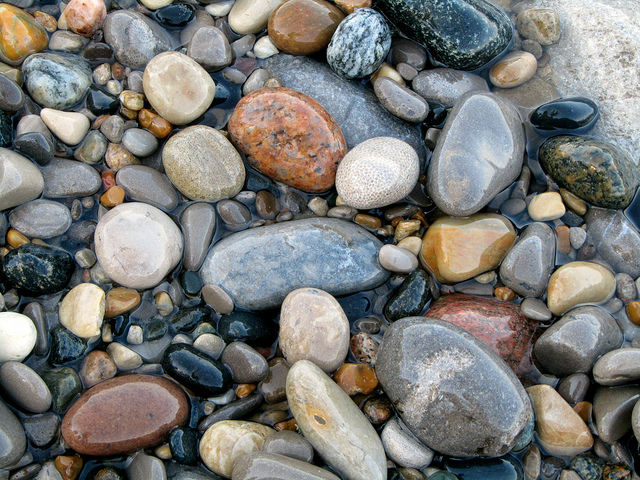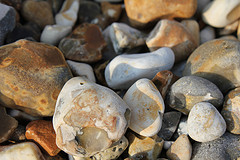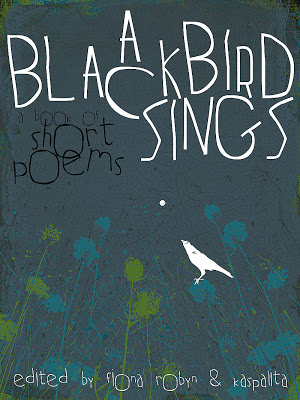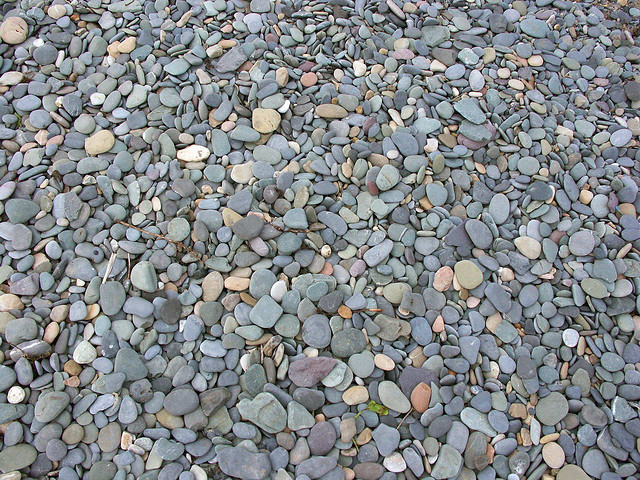Theme Essay by Carla M. Wilson
Daily Writing to Ease Transitions—and Uncertainty
Best wishes for the holiday season from Talking Writing! For creative spark, we offer a writerly "New Year's Challenge" in the sidebar after this piece.

This year, I’ve been surprised by how hard it’s been to find my faith. In the past, I could always retreat to my books and writing for comfort, even if some members of my immediate family thought this oddly blasphemous. While I still carry elements of my Catholic upbringing with me—such as a belief in compassion and the value of prayer—I now lean toward a mix of Buddhism, Paganism, and Catholicism, a spirituality of my own invention.
But the last six months have been exceptionally rough. Not only have I separated from a twenty-year marriage, but my mother suddenly became ill. At work, a change of bosses brought me new responsibilities. My husband and I are selling our house. I’m out of my comfort zone in nearly all areas of my life, including my writing.
By chance, I recently picked up The Cows by Lydia Davis on a "free books" table at work. The Cows is a 2011 chapbook of Davis's taut prose mixed with photographs that she and her husband took of the dairy farm next to their house in upstate New York. Here, Davis describes three cows she observed from her kitchen window:
Their attention is complete, as they look across the road: They are still, and face us. Just because they are so still, their attitude seems philosophical.
Their stillness struck me, too. Since moving to my new apartment, I’ve found it difficult to focus on my own writing projects, even though I’m alone now with fewer distractions. Any sense of flow I once had feels stale and disrupted. But reading The Cows rejuvenated my interest in making daily observations and writing them down. By focusing on the cows, Davis takes away the pressure that writing and life can impose:

The cows in the past, the present, and the future: They were so black against the pale yellow-green grass of late November. Then they were so black against the white snow of winter. Now they are so black against the tawny grass of early spring. Soon, they will be so black against the dark-green grass of summer.
Whether a writer is religious, agnostic, or an atheist, such observations are a form of meditation. For this reason, Satya Robyn and her husband Kaspa Thompson, British psychotherapists and ordained Buddhist priests, encourage a daily practice they call writing “small stones.” On their website Writing Our Way Home, they note that a small stone "precisely captures a fully engaged moment."
I first started writing my own small stones near the end of 2010 while enrolled in an MFA program in creative writing. At the time, TW contributing writer Theresa Williams, a friend and mentor, had been posting a series of haiku and haibun on her blog (which appeared daily, linked to Facebook). Here’s her “Haiku #367”:
a light left on
pale moths flutter up
the outside pane
I enjoyed reading Theresa’s numbered posts, and the idea of writing a daily poem about nature attracted me. I was extremely guarded about my writing and unwilling to share anything personal; also, a disciplined approach appealed to my need for control. I asked Theresa for more reading suggestions, and she recommended The Essential Haiku: Versions of Basho, Buson, and Issa. I devoured it.
By July 2011, I'd submitted one of my first free-form haiku to A Handful of Stones, Robyn’s “official small stone e-zine.” It was accepted and published that August:
each note
helps slow my breathing
i cup my hands
they smell
of lavender
Another small stone I wrote appeared in A Blackbird Sings, the second anthology of short poems published by Robyn and Thompson in 2012:
The shadow of the mesquite tree:
Like a paper cut-out against black asphalt
Since then, I’ve found writing small stones to be calming during the most difficult periods of my life. I’ve also achieved similar meditative results by writing down dreams or keeping daily journals and sketchbooks.
I often read discussions on writing-related websites (including Talking Writing) that address “why do you write?” Famous authors are quoted for their credos about the writing life, their processes and routines. But after reading these, I bridle a little. Well, I do love to write, but I don’t think I would actually die if I didn’t do it. I can’t explain why I write; nor do I know whether I can legitimately call myself a writer.
What I do know is that writing can be a soulful experience that helps me through challenging times. When I’m able to unplug, shut out everything else, and make creativity a priority, I have a better chance of entering what I call a sacred space.
For those of us who aren’t full-time writers, this can seem like a luxury we don’t deserve. But all people deserve to find a sacred space—through prayer, meditation, music, yoga, the Tarot, caring for other people, art, small stones, observing cows. If you make a habit of writing, you’re a writer. The more you write, the better you become at slowing down and allowing yourself to hear what your true self has to say.
 I can think of no better way to connect with my faith—and yet, it’s taken me longer than usual to write this essay. Worries about my mother, my job, my new single status have caused me to freeze up. I now suspect this isn’t a fear of writing or creativity itself, but a fear of my own faith or seeming lack of it.
I can think of no better way to connect with my faith—and yet, it’s taken me longer than usual to write this essay. Worries about my mother, my job, my new single status have caused me to freeze up. I now suspect this isn’t a fear of writing or creativity itself, but a fear of my own faith or seeming lack of it.
I don’t know what will come next. I’m uncertain, deep in my core, and such uncertainty sometimes feels like an ache that won’t go away. But I know that writing about my uncertainty helps diffuse the anxiety. The desire to write and pursue creative projects keeps calling me—which is why I have faith that I’ll be okay.
In the end, seasons change, and nothing very dramatic happens to Lydia Davis’s cows. I’m sure she continued to observe them, long after the chapbook was written—just as I keep paying attention to the way the light slants across my apartment and the stillness I occasionally find there.
A few months ago, I began writing small stones again in my journal and blogs—about the way the breeze knocks the blinds against the window or the trains sound their mournful horns as I look at the street below. “At the corner upstairs window,” I wrote last June, I became “the keeper of secrets,” the “watcher of trees”:
in my new apartment—
your reminder that I should keep writing
nagging me
*
some of your laundry
still in my basket
*
finally writing something
I cry a little
New Year’s Challenge: Tips for Writing Small Stones
 For several years, Satya Robyn and Kaspa Thompson have conducted a January “Mindful Writing Challenge” on their website Writing Our Way Home. The basic instructions (taken from January 2014) are:
For several years, Satya Robyn and Kaspa Thompson have conducted a January “Mindful Writing Challenge” on their website Writing Our Way Home. The basic instructions (taken from January 2014) are:
- Pay proper attention to one thing every day during January.
- Write it down (this is a small stone).
Robyn confirmed by email that they aren’t conducting a January 2015 challenge. Still, you can carry out your own New Year’s challenge this January. I highly recommend it, and Robyn has graciously given Talking Writing permission to reprint the following helpful tips for writing small stones.
• • •
What does a small stone look like?
As long as it’s shortish, anything goes. There are no strict rules as there are for forms such as haiku. Small stones are often concrete, specific, and written about ordinary things—birdsong or a dark gray cloud.
Do I have to be a writer to write small stones?
No. The process of finding small stones is more important than the finished product. Searching for them will encourage you to keep your eyes (and ears, nose, mouth, fingers, feelings, and mind) open.
Where will I find small stones?
Small stones are everywhere, all the time. All you have to do is pause and let them appear. You’ll know when you see one, because it will set off a small burst of feeling inside you. It might be that you really notice the ugliness of a piece of chewed gum on the pavement or the beauty of a pigeon—or vice versa. An overheard snippet of conversation might strike you as amusing or strange. Whatever you notice, you will be noticing it with fresh eyes.
How do I pick up my small stones?
The best way is to catch them as they occur—by carrying a notebook around with you and jotting down what you’ve noticed or experienced straight away.
How do I polish up my small stones?
Polishing small stones isn’t as important as finding them in the first place, but it is fun! These tips will help you to polish your small stone until it is as accurate and beautiful as you can make it:
- Have you used precise words? Was the berry red or was it scarlet?
- Is every single word necessary? In a short piece of writing, every word must earn its keep. If it doesn’t add anything, take it out!
- Have you shown us something or told us something? Let the reader draw his or her own conclusions. Rather than writing “the sky was beautiful,” show us the sky.
- How does it look on the page? Do you want to use a title? How do you want to use capital letters and punctuation? Do you want to break up your sentence into shorter lines? Fiddle about until it looks right.
- What does it sound like when you read it out loud? Does the rhythm please you? Do you stumble at the same point every time? Fiddle about until it sounds right.
There are no right or wrong answers to any of these questions. Part of being a writer is discovering your own unique way with words.
What do I do with my small stones?
You might just want to keep them in a notebook. You might want to start your own blog—or post them on Facebook, Instagram, or another social media network. You can post your small stones on Twitter using #smallstone.
Reprinted in an edited and condensed form from “Mindful Writing Tool: Small Stones” by Satya Robyn and Kaspalita Thompson; used by permission.
Like what you're reading? Click Donate to Talking Writing.
Support a great nonprofit magazine—and vote for a theme next year!

Publishing Information
- The Cows by Lydia Davis (Sarabande Books, 2011).
- The Essential Haiku: Versions of Basho, Buson, and Issa, edited and translated by Robert Haas (The Ecco Press, 1995).
- “Haiku #367” by Theresa Williams on her “Exile Edition” blog, October 9, 2010.
- “Each Note Helps Slow My Breathing” by Carla M. Wilson, A Handful of Stones, August, 12, 2011.
- A Blackbird Sings: A Books of Short Poems, edited by Fiona (Satya) Robyn and Kaspalita Thompson, 2012.
- “From My Apartment Window” by Carla M. Wilson on her blog Secretscribing (“15–150 words a day”), June 29, 2014.
Art Information
- "Stones" © Rachel Kramer; Creative Commons license.
- "Stones 2" © ianvoyce; Creative Commons license.
- "Small Stones" © paraflyer; Creative Commons license.
 Carla M. Wilson has an MFA in fiction from San Diego State University and a BA in communications from U.C. San Diego, where she now works as an administrative analyst. Some of her short poetry has been featured in Icebox, A Handful of Stones, and Pure Haiku.
Carla M. Wilson has an MFA in fiction from San Diego State University and a BA in communications from U.C. San Diego, where she now works as an administrative analyst. Some of her short poetry has been featured in Icebox, A Handful of Stones, and Pure Haiku.
She's had other work in Fiction International, Black Scat Review, Sleipnir, and various print and online journals. Her first book, Impossible Conversations—a series of dialogues with infamous twentieth-century art makers—will be published by Black Scat Books in 2015.
Carla currently blogs at Secretscribing and her small-stones site Stones and Sky.
